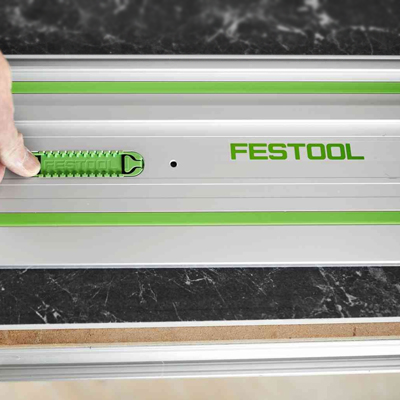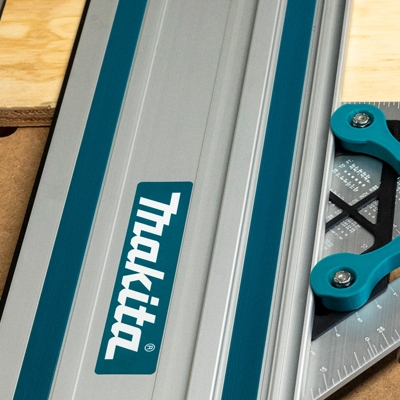Guide Rails
Guide rails are an integral component of various mechanical and industrial systems, serving a crucial role in providing stability, precision, and safety. These long, often metallic structures are designed to guide and control the movement of various objects or components within a defined path. They are widely utilized across a spectrum of applications, ranging from manufacturing and transportation to construction and automation. Guide rails are also a critical feature in construction equipment and heavy machinery. Cranes, bulldozers, and excavators often incorporate guide rails to control the movement of their lifting or digging mechanisms. These rails help operators manipulate heavy loads with precision, reducing the risk of accidents and damage to structures or materials. When considering the buy of guide rails, whether for industrial, manufacturing, transportation, or other applications, it's crucial to make informed decisions that align with your specific needs and requirements. Guide rails come in various materials, sizes, and configurations, and choosing the right ones can significantly impact the performance and safety of your systems or machinery.Top Brands Of Guide Rails
Festool Guide Rails:
Festool is renowned for its high-quality woodworking tools and accessories. Their guide rails are no exception. Festool guide rails are engineered to provide exceptional precision and stability when making straight cuts with Festool saws and routers. They feature anti-slip strips and splinter guards to enhance cut quality. The compatibility of Festool guide rails with various Festool tools ensures seamless integration and superior results.Makita Guide Rails:
Makita, a respected brand in the power tool industry, offers a range of guide rails designed for use with Makita circular saws and routers. These guide rails know for their durability and accuracy. Therefore, they feature an anti-slip surface for secure positioning and can be seamlessly connected for extended lengths. These rails are an excellent choice for professionals and woodworking enthusiasts seeking precise, straight cuts.DEWALT Guide Rails:
DEWALT is a well-known name in the construction and woodworking industry. Their guide rails are designed to work with DEWALT track saws and routers, providing users with straight and clean cuts. DEWALT guide rails are built with durability in mind, ensuring they can withstand rugged job site conditions. They are available in various lengths to accommodate different cutting needs.Bosch TrackSaw Guide Rails:
Bosch, a renowned name in power tools, offers track saw guide rails that are compatible with their track saw system. These are designed to provide stability and accuracy during cutting tasks. They feature an anti-slip strip and are available in different lengths to accommodate various project requirements.Types Of Guide Rails
Linear Guide Rails:
Linear guide rails, also known as linear motion bearings or slides, are design to provide linear motion along a fixed path. They consist of a rail (usually made of steel or aluminum) and a carriage that moves along the rail. These are widely use in CNC machines, 3D printers, and other precision machinery.Profiled Guide Rails:
Profiled guide rails have specialized shapes, such as a V-shaped groove or a rounded track. This is often use in applications requiring high precision and load-bearing capacity, such as in machine tools and automation equipment.Round Guide Rails:
Round guide rails are cylindrical in shape and provide smooth and precise motion in rotational or circular movements. This is commonly use in applications like robotic arms, telescopes, and camera sliders.Box Guide Rails:
Box guide rails consist of a square or rectangular rail and a corresponding carriage. In other words, they are know for their high load-bearing capacity and rigidity, making them suitable for heavy-duty applications in industries like automotive manufacturing and material handling.Dovetail Guide Rails:
Dovetail guide rails have a dovetail-shaped cross-section that offers excellent resistance to torsional forces and high rigidity. In addition, they are often use in precision equipment like optical instruments and woodworking machinery.Telescopic Guide Rails:
Telescopic guide rails, also called telescopic slides, allow for sliding extension, making them ideal for applications where access to equipment or materials needs to be extend or retracted, such as in drawers, vehicle storage compartments, or industrial tool cabinets.Curved Guide Rails:
Curved guide rails are design to facilitate motion along curved or circular paths. They are use in applications like conveyor systems for navigating turns and bends.Cam Guide Rails:
Cam guide rails incorporate a cam mechanism, allowing for intermittent or step-by-step motion. Similarly, they are use in applications like indexing conveyors and packaging machinery.Linear Shaft Rails:
Linear shaft rails consist of a linear shaft (usually made of hardened steel) and accompanying linear bearings. They are commonly use in applications requiring smooth and low-friction linear motion, such as in printers and CNC routers.Rack and Pinion Guide Rails:
Rack and pinion systems use a toothed rack (the rail) and pinion gear to convert rotary motion into linear motion. After that, this often use in applications like CNC plasma cutters and laser engravers.Monorail Guide Rails:
Monorail guide rails feature a single, linear rail and a carriage that runs on top of it. They are commonly use in high-precision applications, such as semiconductor manufacturing and metrology equipment.Features:
- Precise Guidance: Guide rails provide accurate and predictable motion along a predefined path, ensuring that machinery or equipment moves exactly as intend. However, this precision is vital in industries like manufacturing and automation.
- Load Capacity: Many guide rails are design to support heavy loads while maintaining stability and alignment. They distribute the load evenly, preventing excessive wear and tear on components.
- Variety of Types: Guide rails come in various types and shapes, including linear, profiled, round, and box guide rails. This diversity allows for customization and adaptation to specific application needs.
- Materials: Guide rails typically make from durable materials such as steel, aluminum, or composite materials. The choice of material depends on factors like load capacity, environmental conditions, and budget.
- Maintenance Features: Some guide rails incorporate self-lubricating properties or protective coatings to reduce friction and wear, minimizing the need for frequent maintenance.
- Mounting Options: They can be install using different mounting options, including surface mounting, recessed mounting, or embedding, providing flexibility in their integration into various systems.
Benefits:
- Enhanced Precision: Guide rails ensure that equipment and machinery move with high precision, reducing errors and improving the quality and consistency of processes.
- Increased Efficiency: By minimizing deviations and maintaining alignment, guide rails optimize the efficiency of manufacturing, transportation, and automation systems, leading to higher productivity.
- Safety: Guide rails help prevent accidents, such as derailments in transportation systems, by keeping objects or vehicles on the intended path, thereby enhancing overall safety.
- Longevity: High-quality guide rails can extend the lifespan of machinery and equipment by reducing wear and tear on components. This results in cost savings over time.
- Reduction in Downtime: The reliability and stability provided by guide rails reduce downtime due to maintenance or repairs, ensuring uninterrupted operations.
- Versatility: Guide rails find applications in a wide range of industries and can adapt to various environments, making them a versatile choice for engineers and manufacturers.
Safety:
- Accident Prevention: Guide rails play a critical role in preventing accidents and mishaps by guiding objects, vehicles, or machinery along a predetermined path. This is especially important in transportation systems where derailments or collisions can have severe consequences.
- Stability: They provide stability to moving parts, ensuring that equipment and machinery operate smoothly and without unexpected deviations, reducing the risk of damage or injury.
- Load Safety: Guide rails distribute loads evenly, preventing overloading or uneven weight distribution that could lead to equipment failure or accidents.
- Maintenance Safety: High-quality guide rails with low maintenance requirements reduce the need for personnel to perform maintenance tasks in potentially hazardous environments.
- Alignment and Control: Guide rails help maintain alignment in precision machinery, preventing misalignment-related safety hazards and ensuring that moving parts remain under control.





